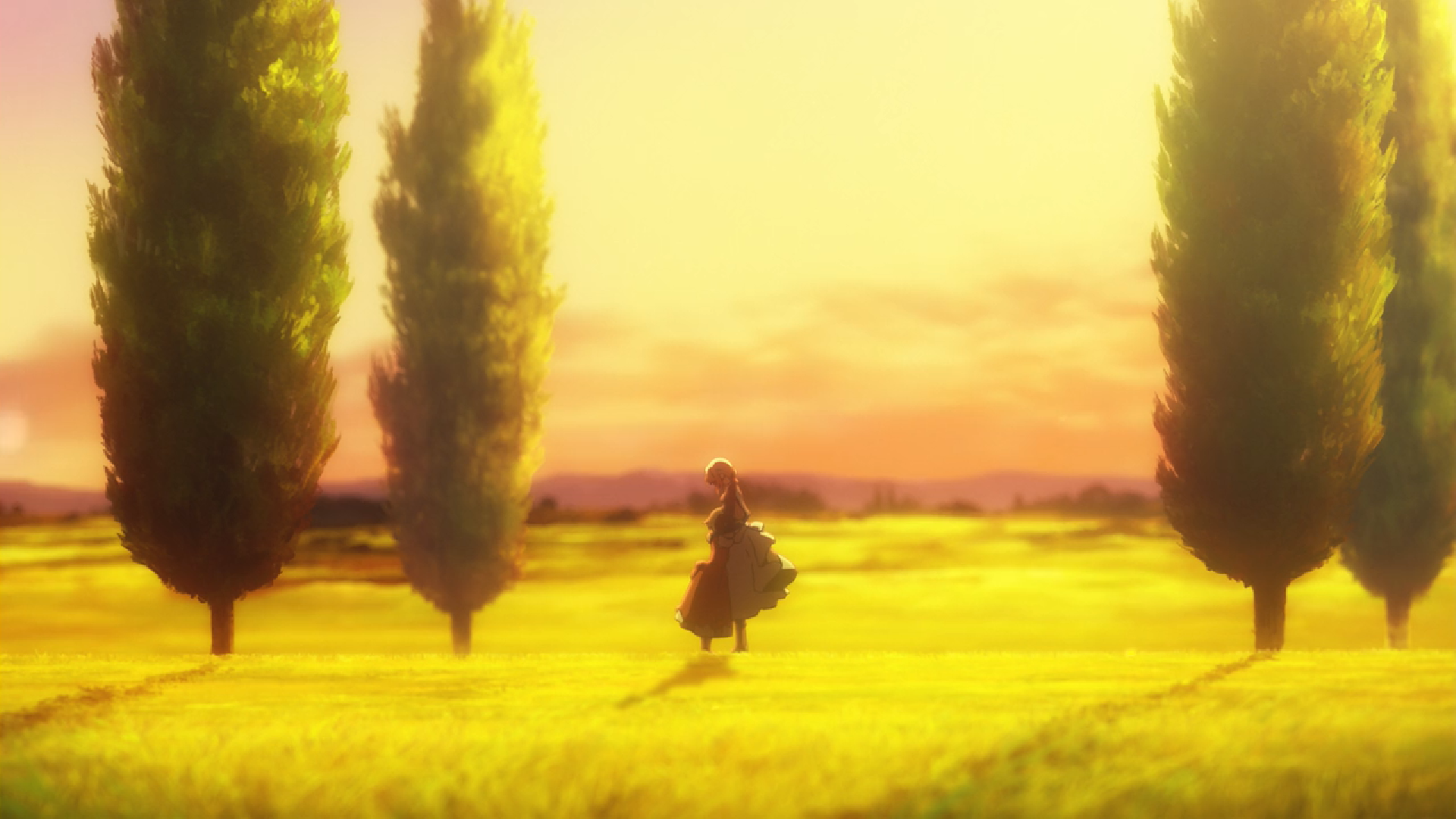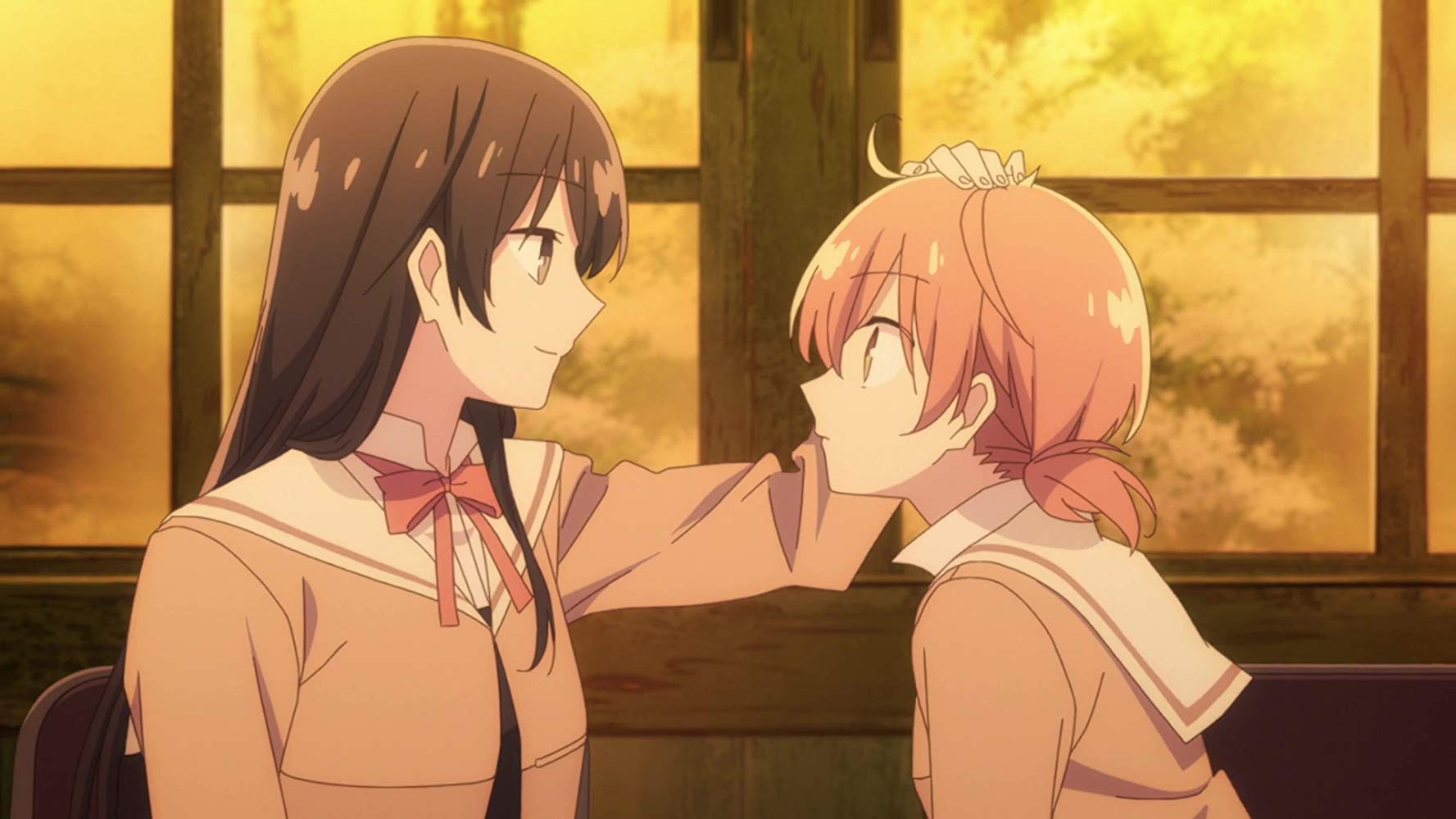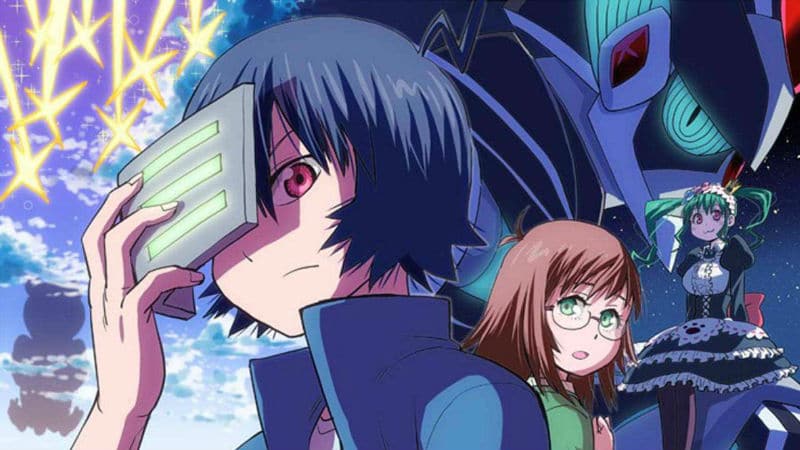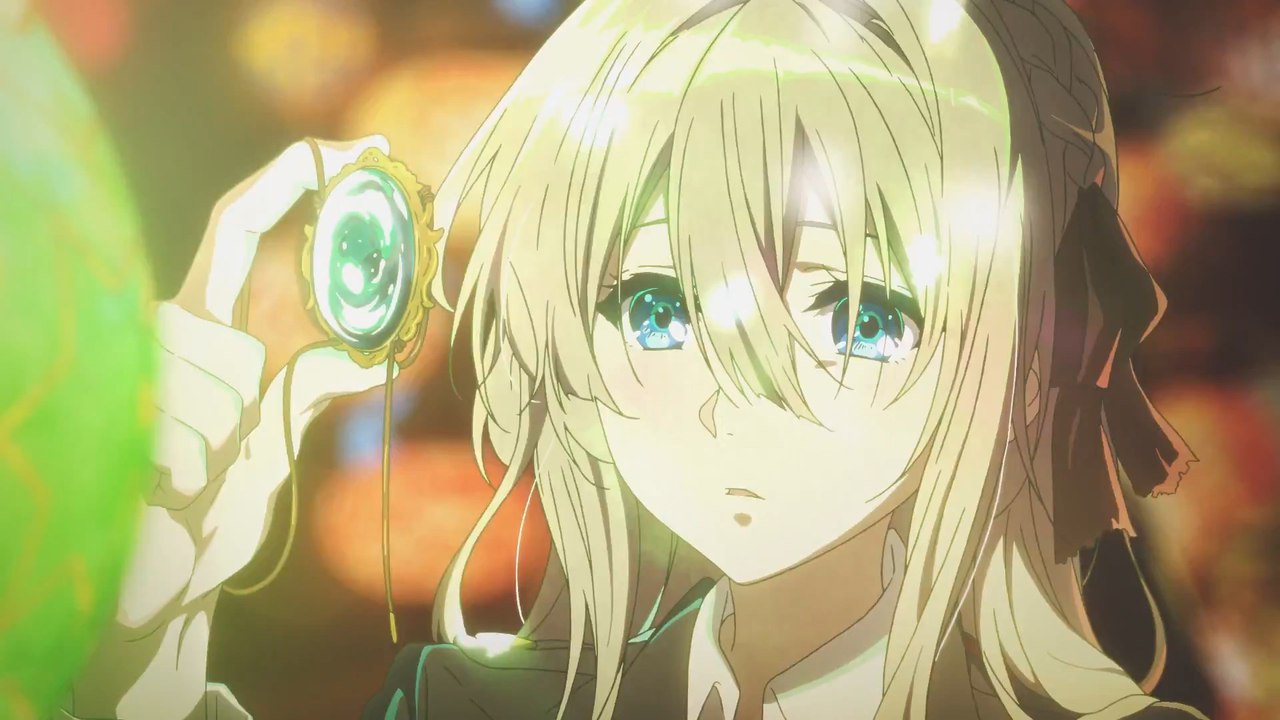
2018 was quite a good year for Japanese cartoons. We’ve reached a point with most mediums where better distribution platforms have led to a renaissance of great entertainment. Finally, creators are far less shackled by the constraints of publishing and finding an audience, leading to a plethora of great films, games, and television. This is also the case with anime, and the existence of streaming sites has made the medium far more available outside of Japan than it ever has been before. The result of this for the industry is that there are many more shows that deviate from the central audiences of certain popular genres. Sure, the majority of series still pander, but 2018 was a year that demonstrated a diversity of great anime.
Between My Hero Academia, Attack on Titan, Thunderbolt Fantasy, SSSS Gridman, Megalo Box, Sword Art Online: GGO, Devilman Crybaby and Jojo: Part 5, fans of hot-blooded action spectacle were covered last year. There were some fantastic comedies such as Hinamatsuri, and Aggretsuko that managed to make us laugh and sympathize with their casts in equal measure. There were poignant dramas such as March Comes in Like a Lion, A Place Further Than the Universe, Run with the Wind, After the Rain, Run with the Wind, Revue Starlight, and Iroduku. And amongst those haphazard buckets I’ve placed the previous series into, there is a great degree of variety and other subgenres to consider for each (March and Run with the Wind are sports shows, Revue could be classified as an action show, etc).
It is telling that my top three favorites of the year all fall into different genres; one is a romance, the second is a mecha, and the final one is a drama. But the unifying theme across all three is that despite their superficial differences, they are each shows that have a great degree of respect for their characters and their struggles. Despite the adversity that they all face, there is always a light at the end of the tunnel. And in a year largely defined by hopelessness, a little hope is a much-needed elixir.
Now, without further ado, let’s run down the three anime that I would most recommend from 2018
3. Bloom Into You
It’s somewhat uncommon that we get a sympathetic yuri, one that doesn’t exploit its female characters purely for male voyeurism. Bloom Into You is one of those rare shows, an excellent romance that conveys the emotions of its heroines with grace and insight. Based on the manga by Nio Nakatana, Troyca makes the most of its source material through excellent visual storytelling and complex characters. The result bathes us in the warm glow of first love, capturing the particulars of intimacy that differentiate this story from much of the rest of the pack. A passionate kiss in the middle of the cultural festival, holding hands for no particular, lying in bed while you spill your inner secrets, these details grant this relationship weight.
The story begins with high school freshman Yuu Kaito lamenting the fact that she has never been able to fall in love. Compared to the explosive romance found in the shojo manga she regularly reads, her own feelings have been notably more muted. Despite having been confessed to, no one has been able to capture her romantic interest. This is partially due to the fact that she thinks she is unworthy of this love, but the main issue seems to be overblown expectations.
On her first day attending the student council, she meets a girl who echoes this sentiment. She is a senior, Touko Nanami, who plans on running for president. But after meeting Yuu, Touko’s stance on romance completely changes, and she quickly falls in love with her underclassman. While at first Yuu is disappointed that she is once again alone in her asexuality, she decides to go along with Touko’s advances, mostly because she doesn’t dislike the intimacy and she is a naturally caring person. The two are frequently open about their feelings, and Touko also agrees that she isn’t ready for a relationship. But of course, over time their relationship intensifies, and they must both face their own deeply seated complexes before they can be with each other.
Like any good romance, the compositions and visual language accent the shifts in the story. When Yuu and Touko are together, we get closely cropped shots that highlight their physical comfort. When they kiss, we get explosions of the colorful background art, time seemingly coming to a standstill. While it may sound like there is a lack of tension due to this relationship starting from the first episode, the character’s numerous hang-ups combine with love triangles to create messy situations. Even though it’s obvious how Yuu really feels about Touko, she is unwilling to admit her true feelings. Meanwhile, Touko is so consumed by survivor’s guilt, that she slavishly tries to recreate her ideal of her sister who died in a car accident.
The supporting cast also reinforces the drama and story’s core ideas. Touko’s Vice President Sayaka further complicates things, her previous relationships leaving her in desperate need of emotional support. We also get to witness a delightfully healthy relationship between two adult women. Their teacher Riko lives with her girlfriend Miyako, and the two offer advice for our protagonists throughout the story. Yuu’s friend Koyomi is an aspiring writer who is able to cleverly deduce core aspects of Touko’s complicated array of personas. This sets the stage for a school play that echoes the questions of identity that function as a thematic throughline.
Bloom Into You’s biggest failing as an anime is that its first season doesn’t necessarily end in a dramatically satisfying place. This is a classic issue with manga adaptations, one that is exacerbated by the fact that the source material doesn’t have enough material for a second season yet. But the only reason this is a problem in the first place is due to the fact that this is such an articulate and respectful look at same-sex relationships, one that is bolstered by strong visuals and interesting conflict.
2. Planet With
It’s hard to think of a show as tightly written as Planet With, an anime original that packs a truly absurd amount of plot into a lean twelve episodes. What starts as a somewhat straightforward mecha is packed with three or four major arcs, the dangling plot threads of each tying nearly into the next set of episodes. The arcs are tied together by a treatise on redemption, forgiveness, and the diverging potentials of humanity.
The story begins with an amnesiac boy, Soya Kuroi, waking up in a strange home. He is flanked by Sensei, a giant humanoid cat man, and Ginko, a girl dressed as a gothic loli. His strange guardians point him in the direction of his underlying goal, to rid the Earth of the destructive power that tore his own world apart. However, this revenge story quickly becomes far more interesting once we meet those that wield the power he seeks to destroy. They are the chosen champions of Earth, the mech pilots that have just recently begun to defend the planet from strange encroaching UFOs. Furthermore, the only way to destroy these alien vessels is to win a test of wills, one in which the heroes are offered their deepest inner desires, in exchange for something very important. And somehow, this concept only persists for the first few episodes.
Perhaps the most impressive thing about the series beyond its pacing is the fact that its various factions all have valid points. Instead of being motivated by obvious forces of good or evil, the character’s lived experiences dictate legitimate different points of view. One faction is worried about the historically destructive inclinations of humanity, and seek to limit our collective ambitions to prevent problems in the future. Another wants to disarm Earth, but also to maintain its soul. A third group simply fights for autonomy. The viewpoints of the members of these groups are well-realized through naturally integrated flashbacks that occur while the pilots fight the alien invaders, as well as through reveals that align with the shifts in the story arcs.
While Soya initially comes off as a fairly blasé, amnesiac protagonist, as we learn more about his tragic backstory his goals become more than the vague impulses of revenge. The relationship he forms with his adoptive big sister Ginko acts as a microcosm for Planet With’s central idea, that forgiveness and kindness can triumph over cycles of hate. The supporting cast is also very strong, their belief structures naturally bouncing off of each other in a believable fashion. We have Miu and Hirumi, two lifelong friends who inspire each other to become stronger, partially out of rivalry but also out of admiration. Due to a tragic incident in which he wasn’t able to save someone he loves, Hideo instead sees power as a tool to protect others. There’s Benika, whose experience as a cop have jaded her to think the worst of people, leading her to believe we don’t deserve power in the first place. And the grander rivalry between Sensei and Generalissimo underscores the question as to whether humanity deserves its undiluted free will.
Although Planet With’s writing is strong, in terms of its broader ideas, dialogue, and pacing, it does have some shortcomings when it comes to its action sequences. The 3D animation used for the fight scenes make the parts where giant robots punch each other the least interesting segments of the story. Luckily, enough character revelations and important plot points hinge on these fights that the writing can even carry these elements. Additionally, the compositions are quite evocative, likely due to the talented mangaka Satoshi Mizumaki’s involvement as the show’s storyboarder and series composer. Some minor issues aside, Planet With is an undiluted triumph, a bleeding heart appeal towards our better inclinations. Its affirming message avoids over-sentimentality through its nuanced portrayal of all sides of this debate over the fate humankind deserves.
1. Violet Evergarden
One of the most universally anticipated anime going into 2018 was Violet Evergarden. The first reason for all of this hype was that the show was going to be based off a well-regarded light-novel series that had already been completed, meaning the story was beloved by many and would feature immediate closure. The second reason, one that was more important for me personally, was that the adaptation was being handled by Kyoto Animation. KyotoAni is a powerhouse of the industry that is one of the few anime studios capable of maintaining in-house animators. Between the seminal Disappearance of Haruhi Suziyama, K-On!, Nichijou, Sound Euphonium, the film A Silent Voice, and dozens of others, there are few studios as adept at realizing character dramas as KyotoAni.
Luckily the hype was more than met, and despite a slow start paired, Violet Evergarden lives among their finest work. Taking place in a highly fictionalized mid-20th-century society, Violet arrives in the hometown of her commanding officer Gilbert Bougainvillea after a period of war. She was a lethal soldier, raised on the battle under her Gilbert. However, before long he began to see her as a daughter figure, going out of out of his way to teach her to speak, read and write. In the last battle of the war, Violet sacrifices both of her arms to attempt to save Gilbert, but she fails. With his dying breaths, he says “I love you”, setting Violet on a quest to understand what he meant. From there she becomes an “Auto-Memory Doll”, a profession that tasks people with ghostwriting letters that capture the sender’s intent. This is a challenging profession for her at first, as her life as a soldier led to muted emotions and an inability to understand basic social cue. But through the various interactions with her clients, she slowly comes to find what she was searching for.
As previously mentioned the story begins out “slowly”, mostly due to the fact that it is initially difficult to relate to our protagonist. Her limited emotional range makes it challenging to empathize with her, although this is clearly very much by design. Luckily, this plot point ties into the delight of Evergarden, as we get to witness how bit by bit, inch by inch Violet comes closer to realizing what it means to be human. At the start of the story, she can’t possibly understand the complexity of the fact that Gilbert looked at her as his daughter. To her, he was everything, her mentor and her commander, an authority figure who gave her meaning. But due to her limited range of experiences, she still couldn’t possibly hope to glean the meaning of this kind of familial love. However, her job as a ghostwriter provides an abundance of direct experiences with volatile, messy emotions. She witnesses death, family struggles, and love. She helps mend bonds, and forge new ones. This vignette-oriented storytelling structure marries the strength of procedurals with the weight of a serialized show, setting up intensely emotional interactions that can entirely resolve over the course of an episode.
This ties into another of the show’s greatest strengths, the fact that many of the episodes have an almost surgical ability to elicit tears. In particular, Episodes seven and ten are able to dwarf the emotional resonance of many entire other stories, each conveying the swelling pain of loss in overwhelming and affecting ways. The fact that we can come to care about these characters so quickly is a testament to the strength of the character writing and visual execution. And I would be remiss to mention this show without drawing attention to its lavish aesthetic and direction. Here Kyoto Ani’s trademark polished style is married to a bevy of post-processing effects meant to simulate the usage of real cameras. While some have criticized this as an overuse of visual effects, I think the usage of bokeh and simulated lighting often amplifies the dramatic beats.
Similarly, Taichi Ishidate’s direction catches all of the subtly of Violet’s feelings. Her isolation from society in episode one and two is represented through shots that depict her as alone in populous places, or through compositions that frame her at the edge of a shot. As she is bombarded with the guilt of what she did during the war in episode nine, this is depicted through harrowing close-ups that only depict her eyes or parts of her face or her boots. Similarly, the soundtrack is outstanding, an orchestral score that acts as an amalgamation of the melancholic and hopeful, which also feels firmly tied to the setting.
I admit that Violet Evargarden won’t be for everyone. It is an intensely emotional journey that relies on the viewer’s ability to quickly empathize with new sets of characters on an episode-by-episode basis. Aspects of Violet’s past and her intense disconnect from society require some degree of suspension of disbelief. But taken as a whole, this is a rare show that will transform many well-adjusted adults into sobbing wrecks, a tidal wave of well-articulated sentiments that lead to emotional triumphs.
(PSA: Violet Evergarden is available on Netflix streaming)






